Did you know that sheep are extremely social? Or that they are very intelligent, forge friendships, and have excellent long-term memories? Or that they exhibit a wide range of emotions?
Origin
Sheep have existed for over 2.5 million years — and there are approximately 40 different species of wild sheep in existence worldwide.
Other than dogs, sheep are thought to be one of the first animals domesticated by humans.
The domestication of the wild mouflon can be traced back to between 11,000 and 9,000 BC in ancient Mesopotamia. Humans developed woolly sheep at around 6,000 BC in Iran, and later imported them to Africa and Europe. Wool spinning originated at around 3,500 BC.
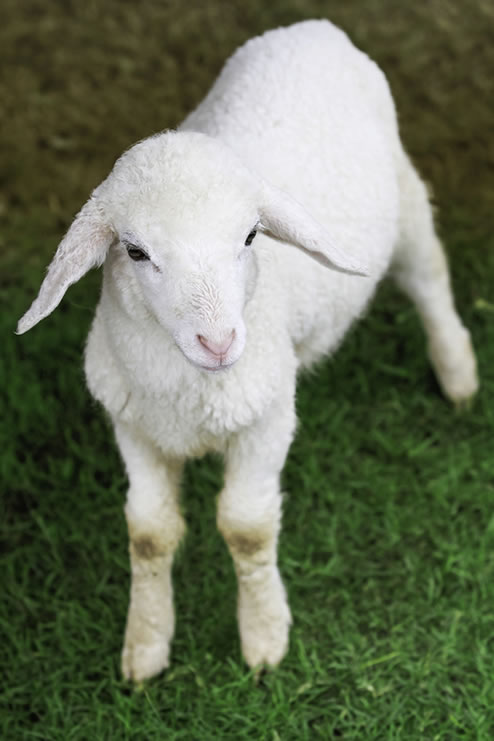 During his second voyage in 1493, Christopher Columbus brought domestic sheep to the Americas with him, while Hernan Cortes brought sheep to Mexico in 1519.
During his second voyage in 1493, Christopher Columbus brought domestic sheep to the Americas with him, while Hernan Cortes brought sheep to Mexico in 1519.
The vast majority of flocks of sheep today are located across Western range lands.
Natural Needs, Tendencies and Preferences
Sheep possess very strong flocking (herding) and following instincts. They band together in large groups in order to escape / evade danger from predators. From birth, lambs learn to follow the older members of their flock — and sheep will follow a flock leader anywhere.
Sheep are very social. They become stressed if they are not within eyesight of other sheep while grazing or become separated from the rest of their flock. They form close bonds with the other sheep members of their flock.
Sheep will graze for an average of seven hours per day and prefer clover, grass, and other pasture plants — especially forbs, a flowering broad-leaf plant that contains nutrients. They will also eat hay, crop by-products (e.g., soybean hulls, peanut hulls, corn gluten feed, whole cottonseed) and other grains.
Lambs remain with their mother for approximately two months — and if separated before ready, both mothers and the babies will cry for days.
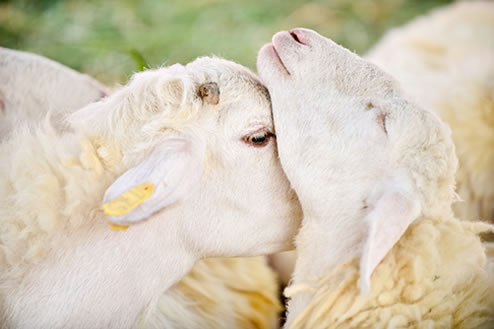 Lambs love to climb and play frequently — they are naturally curious and love to explore their surroundings. If shelter or shade is available to them, sheep will make good use of it.
Lambs love to climb and play frequently — they are naturally curious and love to explore their surroundings. If shelter or shade is available to them, sheep will make good use of it.
Sheep’s Intelligence
Sheep are very intelligent and have the ability to recall more than 50 other sheep for up to two years. They can also recognize human faces. Sheep form individual friendships with each other and work well in groups. They can learn / solve problems, and have excellent long-term memories (similar to and perhaps even superior to humans). Recent tests and studies have revealed that sheep have the intelligence equal to monkeys, rodents and even humans in some cases. They also know enough to search for the particular plants that will make them feel better when they are ill and/or in need of a particular nutrient. Sheep are able to learn complex tasks and quickly adapt to any changes. They exhibit a wide range of emotions including compassion and empathy, and will mourn the loss of a flock member.
Sheep will live between 10 to 12 years in the wild (as opposed to only six to eight months when raised for meat).
What’s Changed — A Sheep’s Life Today
2.2 million sheep and lambs are slaughtered for meat in the U.S. every year.
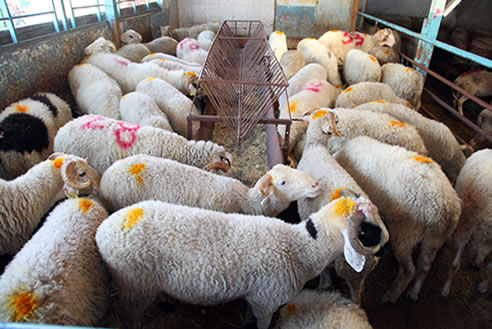 Tail docking occurs when the lambs are only a few weeks old in order to prevent fecal matter from accumulating near their backside. This is a painful procedure for the lambs that is done without anesthesia.
Tail docking occurs when the lambs are only a few weeks old in order to prevent fecal matter from accumulating near their backside. This is a painful procedure for the lambs that is done without anesthesia.
The practice of mulesing involves cutting away the skin from the sheep’s skin near its rear area in order to prevent flystrike. However, ranchers are currently phasing out this painful process in Australia.
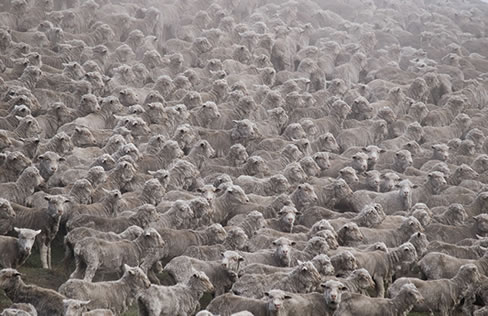 Sheep farmers in Australia export any sheep with decreased wool production to the Middle East for slaughter. These are grueling trips that last up to three weeks. Those in charge of the transport subject the sheep to starvation, thirst, disease and stress.
Sheep farmers in Australia export any sheep with decreased wool production to the Middle East for slaughter. These are grueling trips that last up to three weeks. Those in charge of the transport subject the sheep to starvation, thirst, disease and stress.
Cause and Effect
Sheep consume between one to two gallons of water every day. A 100 lb. sheep produces approximately four pounds of manure every day.
Lamb meat / mutton also contains very high levels of saturated fat and cholesterol — known to cause heart disease, obesity and other health problems for human beings.
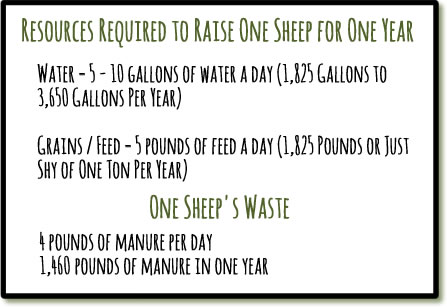 What Happens Next
What Happens Next
Earth cannot continue to sustain the types of large-scale operations involved in mass production of animals for food or commodities (e.g., wool).
And the human body cannot continue to tolerate the consumption of a product that is unhealthy for it and does not meet its nutritional needs or enable it to ward off diseases.
Consider adopting a plant-based diet — and using cruelty-free alternatives to wool — instead.
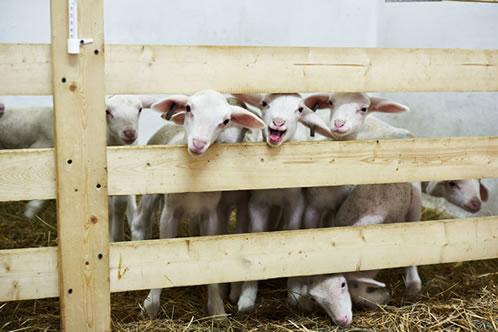 Gory Details / Other Articles
Gory Details / Other Articles
http://www.farmsanctuary.org/learn/factory-farming/sheep-and-goats/
http://www.peta.org.au/issues/food/truth-sheep-food/
What’s wrong with wool: http://www.all-creatures.org/anex/sheep
Mulesing article: http://www.peta.org.au/issues/clothing/cruelty-wool/mulesing-barbaric-unnecessary-cruelty/
Compassionate clothing: http://www.peta.org/living/fashion/cruelty-free-clothing-guide/
Vegan Fashion Shopping List: http://www.farmsanctuary.org/vegan-fashion/
Wool, Leather and Down: http://www.farmsanctuary.org/learn/factory-farming/wool-leather-and-down/
Sources for this Article
History of the Domestic Sheep; http://www.en.wikipedia.com
http://www.sheep101.info
History of the Sheep; http://www.woolandsheep.com
8 Amazing Ways Sheep are Smarter than You Think; http://scribol.com
Sentient Sheep; http://www.think-differently-about-sheep.com

